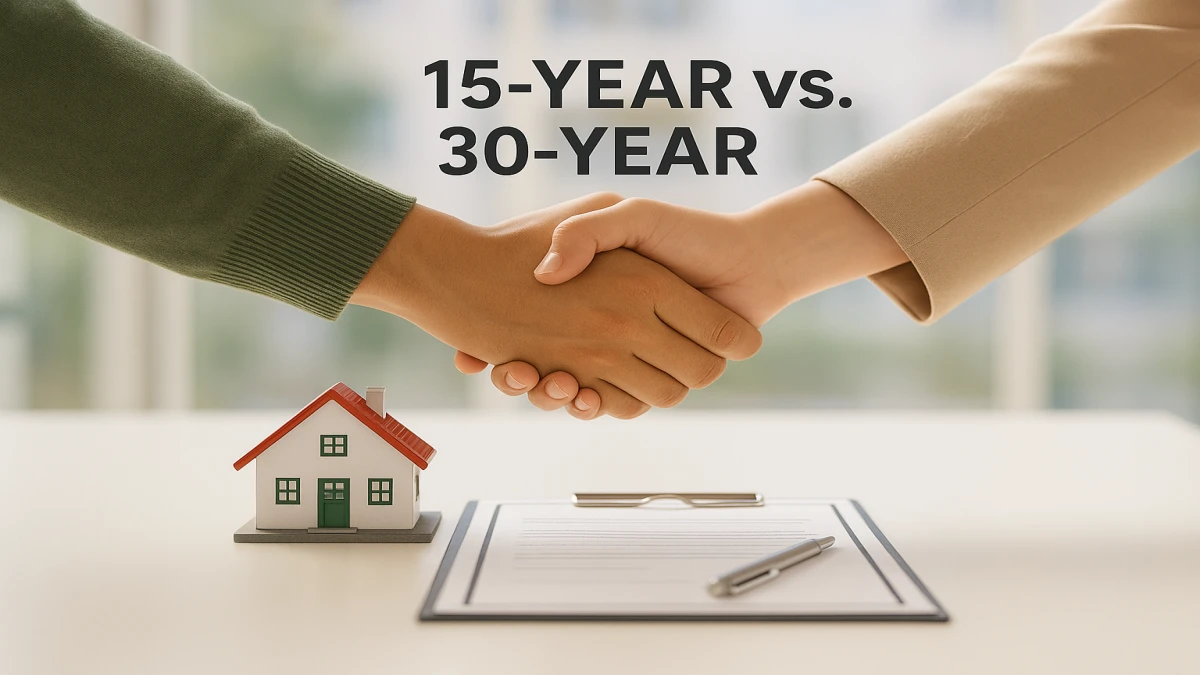15-year vs. 30-year Mortgage
When shopping for a home loan, you'll likely face a critical decision: choosing between a 15-year and a 30-year mortgage.
While the 30-year option offers lower monthly payments, it comes with a significantly higher total cost over the life of the loan. Understanding why this happens can help you make a more informed financial decision for your future.
Why Does the 30-year Mortgage Cost So Much More Than the 15-year?
Both 15-year and 30-year fixed-rate mortgages operate on the same fundamental principle: you borrow money to purchase a home and repay it with interest over a set period.
The key difference lies in the repayment timeline and how this affects various financial aspects of the loan.
One of the primary reasons 30-year mortgages cost more is their higher interest rates. On average, 30-year mortgage rates run about 0.5% to 1% higher than 15-year rates. This difference might seem small initially, but it compounds dramatically over time.
Why do lenders charge higher rates for longer loans?
- Extended Risk Period: Lenders face a longer exposure to risk with 30-year loans
- Inflation Concerns: The value of repayments diminishes over longer periods
- Opportunity Cost: Lenders could use those funds for other investments during the additional 15 years
Advantages of a 15-Year Mortgage and a 30-year Mortgage
Advantages of a 15-Year Mortgage:
Here are some points of the Advantages of a 15-Year Mortgage:
- Faster Equity Building: You'll own your home outright in half the time
- Lower Total Cost: You'll save significantly on interest
- Forced Savings: Higher payments can create better financial discipline
- Earlier Debt Freedom: You'll eliminate mortgage debt sooner, creating flexibility for other life goals.
Advantages of a 30-Year Mortgage:
Here are some points of the Advantages of a 30-year Mortgage:
- Lower Monthly Payments: More affordable on a month-to-month basis
- Greater Flexibility: You can always pay extra toward the principal when possible
- Inflation Hedge: You'll repay with potentially less valuable future dollars
- Investment Opportunities: The payment difference could be invested elsewhere, potentially at higher returns.
How Does Refinancing From a 30-year to a 15-year Mortgage Work?
Refinancing makes it possible to change from a 30-year mortgage to a 15-year one after buying a home. This can be a smart move when:
- Interest rates are much lower than when the loan first started
- Income has gone up, making it easier to handle bigger monthly payments
- A lot of equity has been built, and paying off the loan faster is a goal.
How to Choose Which One is the Right Choice is 15-year Mortgage or 30-year Mortgage?
The "right" mortgage term depends on your unique financial circumstances and goals:
Choose a 15-year mortgage:
- You have stable income, adequate emergency savings, and want to minimize total costs while building equity quickly.
Choose a 30-year mortgage:
-
You need payment flexibility, want to maximize cash flow for other investments, or are buying in an expensive housing market relative to your income.
15-year and 30-year Mortgage
Here is some of the major information about 15-year and 30-year mortgages:
30-Year Mortgage
- This is a home loan that gets paid off over 30 years.
- Monthly payments are lower because they’re spread out over more time.
- But more interest is paid over the life of the loan.
- It's great for those who want smaller payments and more wiggle room in their monthly budget.
15-Year Mortgage
- This loan is paid off in just 15 years.
- Monthly payments are higher since the loan is shorter.
- But it saves a lot of money in interest and helps build home equity faster.
- It’s a good choice for people who can afford bigger payments and want to be debt-free sooner.






